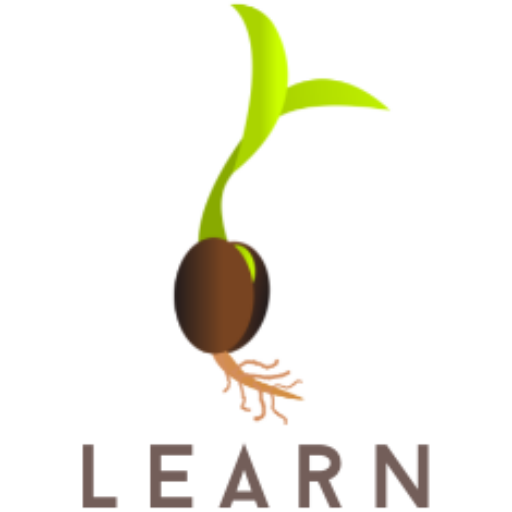Natural Environment
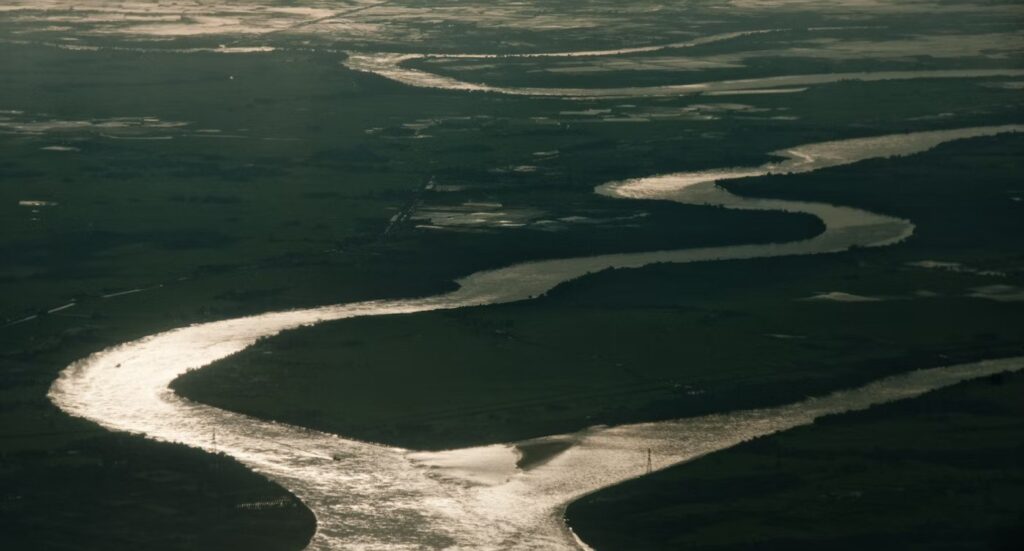
Description: Ayeyarwady river in Myanmar | Credit: International Rivers
In the modern state of Myanmar (Former Burma), the Ayeyarwady (or Irrawaddy) river remains the longest and most distinguished one in the region.
At the beginning Ayeyarwady River flows shallow and is an important spawning ground for fish. As she goes on, she dives deep in middle Myanmar to create a habitat for river dolphins.
Ayeyarwady is born at the confluence of two rivers, the May Kha and Mali Kha, about 43 kilometers north of Myitkyina. From this site, often referred to as Myitsone, it flows for more than 2170km (1348 miles) from the northern uplands to the southern delta region before finally flowing into the Andaman Sea, enriching the cultivated plains along its banks with fertile sediment. (Today Maynmar)
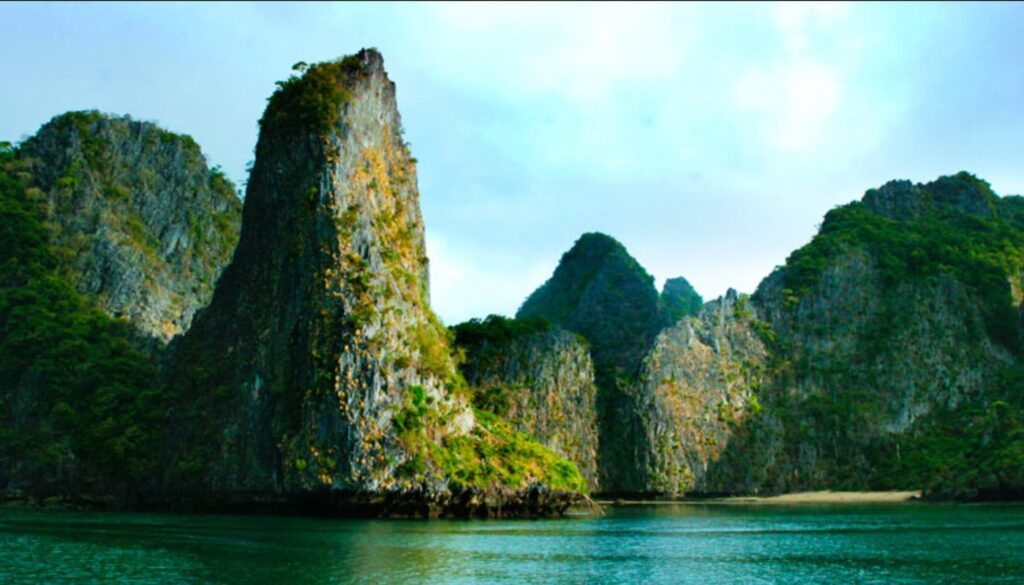
Description: Myeik Archipelago | Credit: Geoengineer
Mergui or Myeik Archipelago – as the locals would call it – comprises about 800 islands, distributed along approximately 600 km of Myanmar’s Andaman coast. It extends from Mali Island north of Myeik, to Za Det Gyi Island in Kawthoung, in the southern Tanintharyi coastal region of Myanmar.
The topography of Tanintharyi coast is greatly influenced by tectonic movement and volcanic activity resulting from the docking of the Indian tectonic plate with the Eurasian plate in the early Miocene. The twisting of the Eurasian plate as the Indian plate dragged its margins northwards formed many rocky shorelines and the rocky headlands and capes jutting out into the sea. The region’s granitic islands began as intrusions of hot magma that rose through weak spots in the Earth’s crust hundreds of million years ago, working their way through thick layers of sedimentary rock laid down at least 100 million years earlier still. (GEO Engineer)
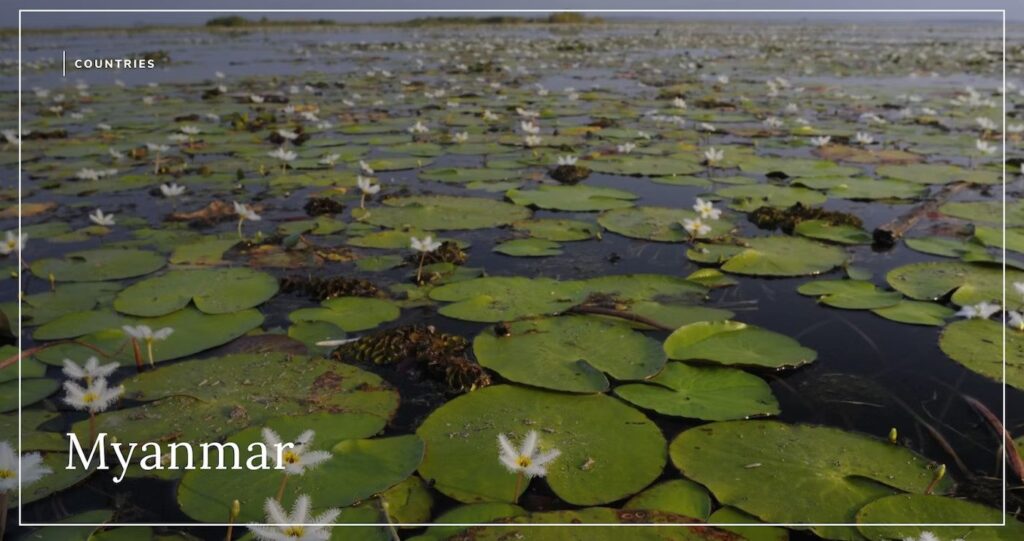
Description: lotus flower-like on water | Credit: Fauna & Flora International
Myanmar is the second largest country in mainland Southeast Asia and is home to a wealth of biodiversity.
The country still retains large tracts of forest that harbour charismatic species such as the red panda and the Myanmar snub-nosed monkey, the latter was only discovered in 2010 and is only found in Myanmar and China.
Myanmar is also home to some of Southeast Asia’s most extensive and least disturbed coastal and marine ecosystems, which include coral reefs, mangroves and seagrass beds. All told, over 800 marine fish species are found here, as well as nine seagrass species and 51 corals. (Fauna & Flora International)
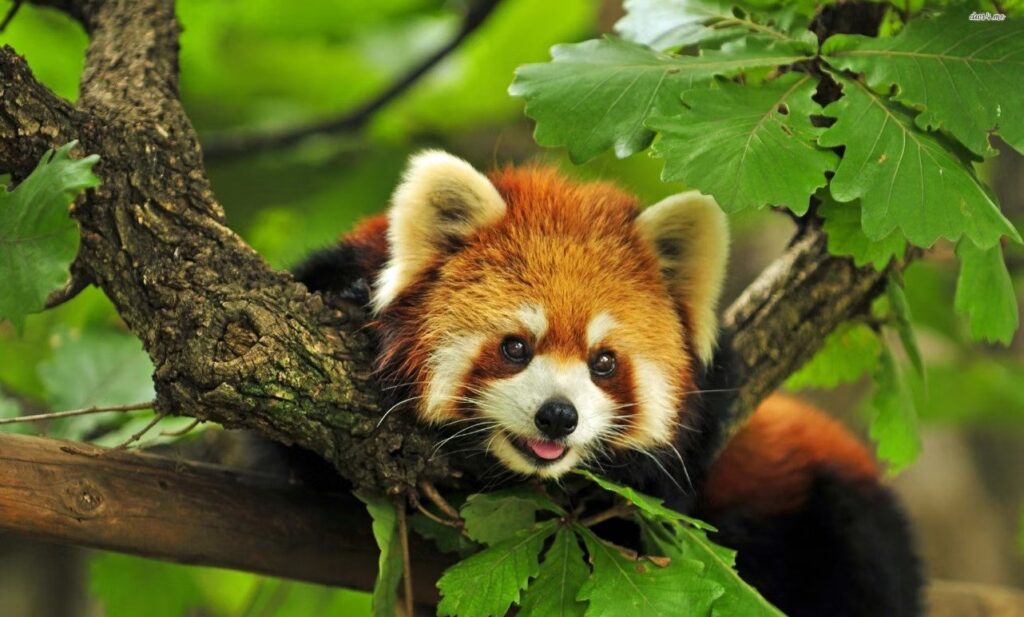
Description: Red Panda | Credit: Serious Facts
Anthropological history
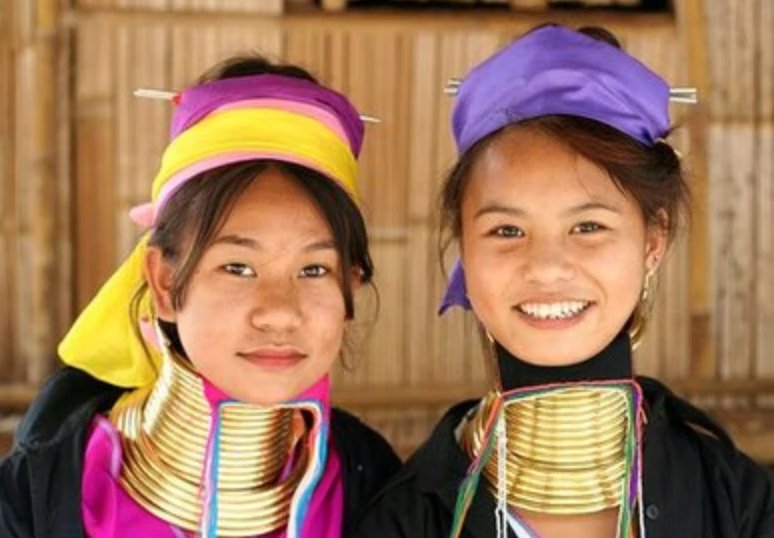
Description: Kayin (Karen) women | Credit: Myanmar Matters
Officially 135 ethnic groups comprise Myanmar people. About 70 percent of the population is descended from Myanmar, also pronounced as Mranma, Burmese or Bama, who arrived from Central Asia and Tibet around the tenth century. Apart from the Chinese and Indians, most minority ethnic groups live mainly in the hills. The hills peoples’ lifestyles and languages are distinct. Some are Buddhists or Christians, but many still adhere to their traditional practices of worshiping local spirits. (Myanmar Matters)
The official language of Myanmar is Burmese. Burmese is the mother tongue of millions of Bamar people – the biggest ethnic group in Myanmar. It is also spoken by the Mon ethnic minority group and some other minority ethnic groups in Myanmar.
With the ethnic diversity, Myanmar has about 100 languages spoken throughout the country. They represent four major language families (Sino-Tibetan, Austro-Asiatic, Tai–Kadai, and Indo-European).
Burmese language belongs to the Lolo-Burmese sub-branch of the Tibeto-Burmese branch of the Sino-Tibetan language family. The script used to write Burmese was developed in the 5th century from a southern Indian script. Burmese is taught in schools across the country and in the numerous monasteries dotting Myanmar. The language is age-oriented and includes the usage of honorifics.
Due to the influence of other languages which Burmese has been in contact with (such as Pali and Mon, the earliest groups to occupy Burma or European languages such as Portuguese, Dutch, English and French), the spoken language is significantly different from the formal written form of the language used in textbooks, formal writing, newspapers, fiction, and expository prose. The written language retains many Pali words and syntactic structures no longer found in the spoken language. (Myanmar Travel)
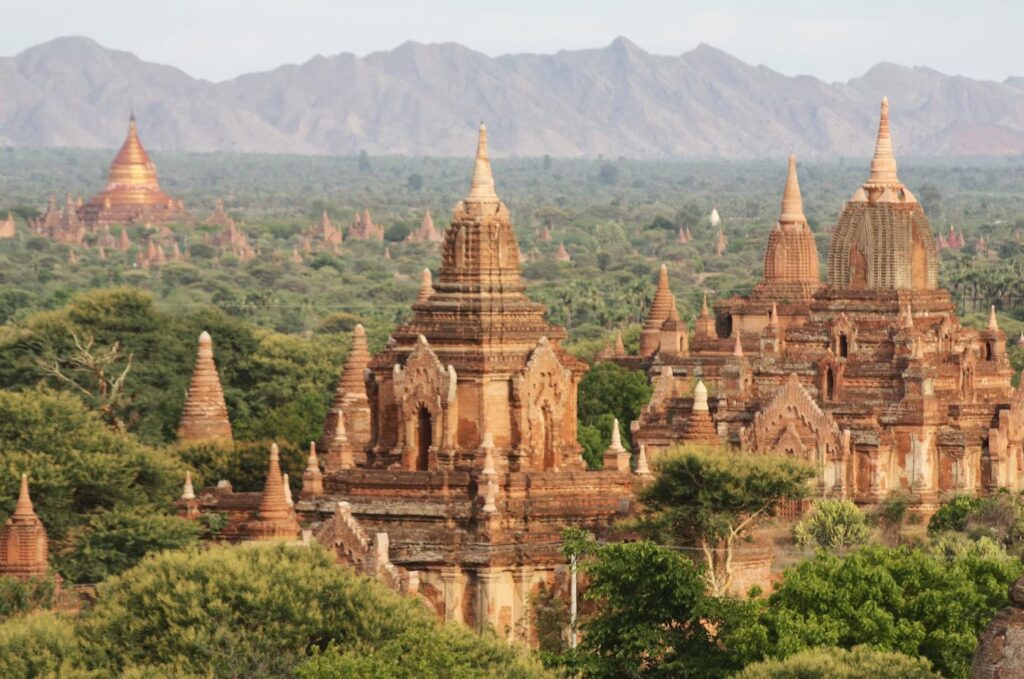
Description: ancient Bagan temples | Credit: Hayes & Javirs
The history of Myanmar (also known as Burma; Burmese: မြန်မာ့သမိုင်း) covers the period from the time of first-known human settlements 13,000 years ago to the present day. The earliest inhabitants of recorded history were a Tibeto-Burman-speaking people who established the Pyu city-states ranged as far south as Pyay and adopted Theravada Buddhism.
Another group, the Bamar people, entered the upper Irrawaddy valley in the early 9th century. They went on to establish the Pagan Kingdom (1044–1297), the first-ever unification of the Irrawaddy valley and its periphery. The Burmese language and Burma culture slowly came to replace Pyu norms during this period. After the First Mongol invasion of Burma in 1287, several small kingdoms came to dominate the landscape, replete with ever-shifting alliances and constant wars.
In the second half of the 18th century, the Konbaung dynasty (1752–1885) restored the kingdom, and went to war with all its neighbours. The Anglo-Burmese wars (1824–85) eventually led to British colonial rule.
British rule brought several enduring social, economic, cultural and administrative changes that completely transformed the once-agrarian society. British rule highlighted out-group differences among the country’s myriad ethnic groups. Since independence in 1948, the country has been in one of the longest running civil wars involving insurgent groups representing political and ethnic minority groups and successive central governments. The country was under military rule under various guises from 1962 to 2010, and in the process has become one of the least developed nations in the world. (Wikipedia)

Description: Naypyidaw, the capital city of Myanmar. | Credit: World Atlas
Naypyidaw is the capital city of Myanmar. Unlike most other capital cities of the world, Naypyidaw is not the largest city in the country, a title that is held by Yangon, the former capital city. It is unique in the country in the sense that it is an entirely planned city which is not part of any state or region of the nation.
Naypyidaw has a short history. It was founded only recently in 2002 on a greenfield site located close to Pyinmana at a distance of about 320 km from Yangon, the former capital city of Myanmar. The construction of the city was commissioned by the then military government of the country. At least 25 construction companies were hired to carry out the activity. As soon as the city came into shape, the government quietly moved the administrative capital from Yangon to Naypyidaw. The shift happened on November 6, 2005. No reason for this shift was provided by the government. The name of the new city was formally announced on March 27, 2006. The construction of the city continued and ended in 2012. (World Atlas)
Society & Culture
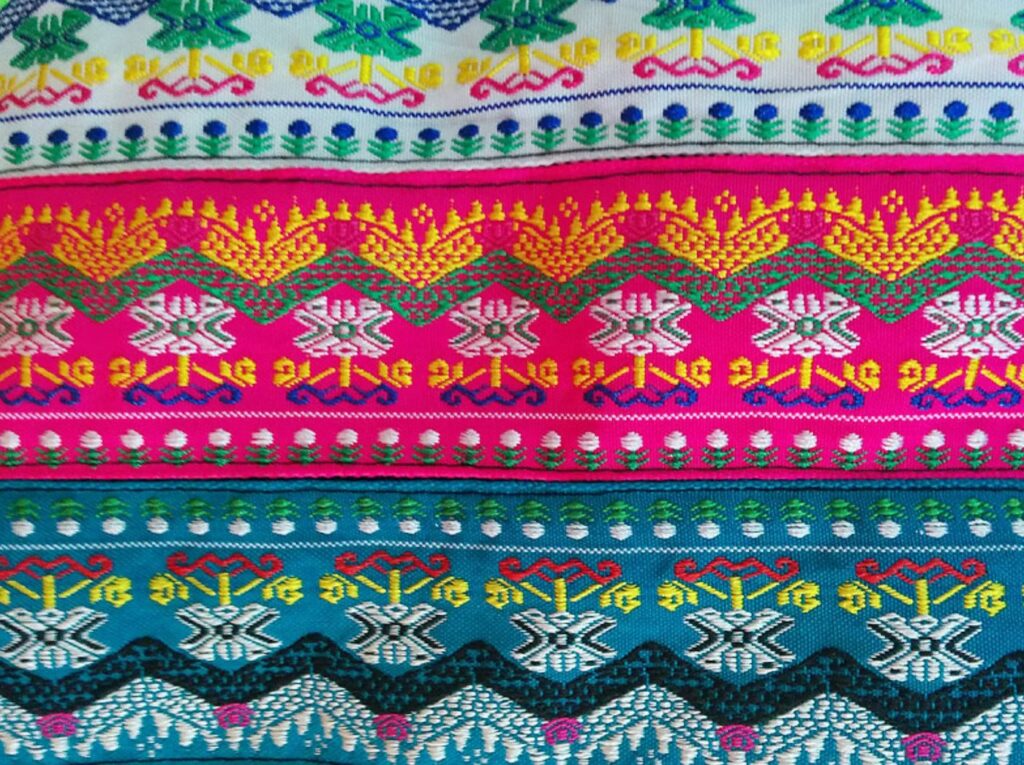
Description: Traditional Longyi Design on fabric | Credit: Myanmars
Longyi is one of the most iconic and traditional forms of dress in Myanmar. It is a piece of cloth that is sewn into a cylindrical shape and tucked at the waist. It is worn by both men and women, with slight variations of the garment for each gender. Most of the men will call their garment a “pasu” while women call theirs “htamein” (Myanmar Marvels)
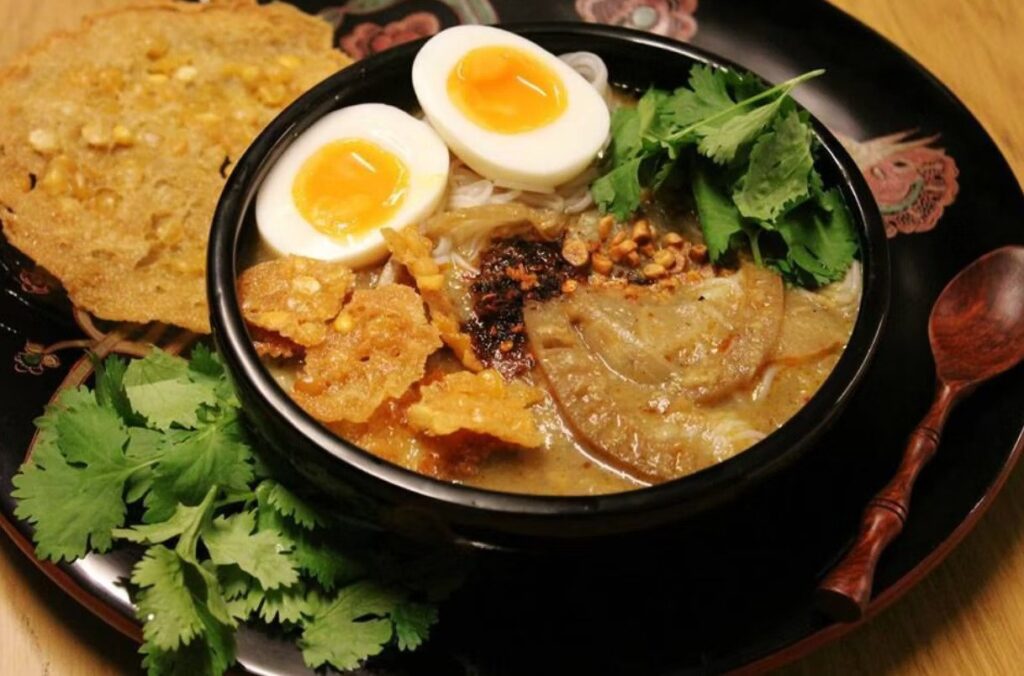
Description: Mohinga dish | Credits: Lucky Treasures Travels
Mohinga is the most popular and famous breakfast in Myanmar. It is served with crispy fried bean fritters, boiled eggs, onions, and a sliced tender core of banana steam. You can add drops of lime juice, fish sauce, dry chili powder, coriander, or beans if you like for your preferable taste. You can also choose boiled eggs ( or bal ou ), fried fish cake (nga hpe) and fritters (akyaw). Mohinga is not only an essential breakfast for Myanmar people but is also taken as a snack throughout the day. (Lucky Treasures Travels)
Thanaka, also spelled Thanakha (Burmese: သနပ်ခါး; MLCTS: sa.nap hka:; pronounced [θənəkʰá]), is a paste made from ground bark. It is a distinctive feature of the culture of Myanmar.
Thanaka cream has been used by Burmese men, women, and children (especially women as make-up) for over 2,000 years. It has a fragrant scent somewhat similar to sandalwood. The creamy paste is applied to the face in attractive designs, the most common form being a circular patch on each cheek, and nose, sometimes made stripey with the fingers known as thanaka bè gya, or patterned in the shape of a leaf, often also highlighting the bridge of the nose with it at the same time. It may be applied from head to toe (thanaka chi zoun gaung zoun). Apart from cosmetic beauty, thanaka also gives a cooling sensation and provides protection from sunburn. It is believed to help remove acne and promote smooth skin. It is also an anti-fungal. (Wikipedia)
The Academy Myanmar Pyi Kyauk Sein Ensemble ‘Myanmar Traditional Overture’ (Musical introduction to the rite)
Current Socioeconomic Crisis
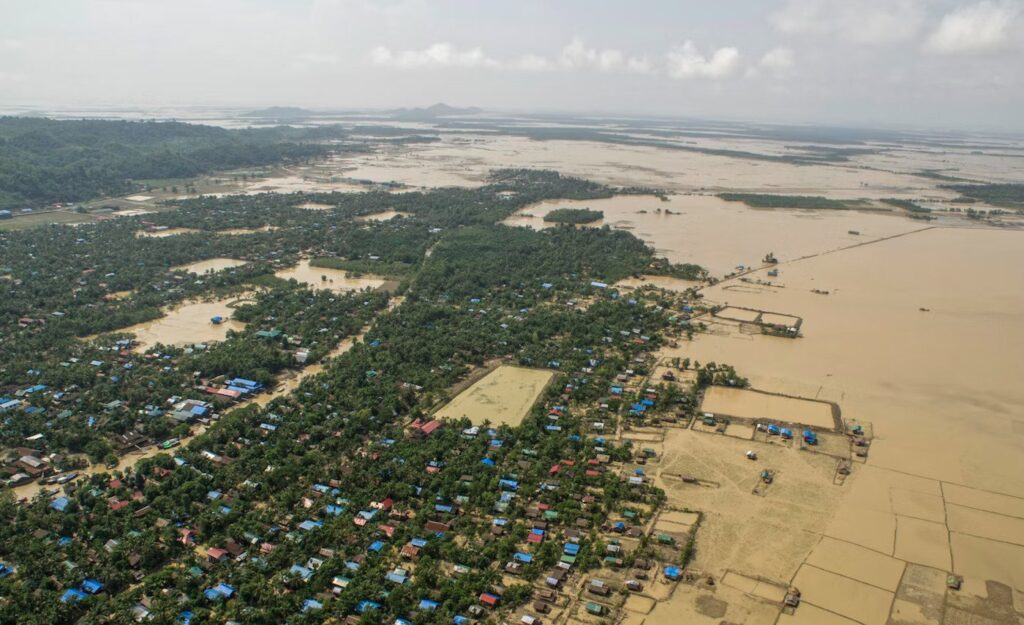
Description: Myanmar after cyclone Komen in 2015 | Credit: Kaung Htet via International Rescue Comittee
Myanmar has long been poorer than most of its neighbors due to isolationist policies favored by the military junta in the 1960s and 1970s, economic mismanagement since then, and ongoing conflict, among other issues.
Much of the population relies on agriculture to make a living. Poverty has remained high in rural areas, where most people live. The country’s significant mineral deposits, particularly of jade and rubies, and natural gas reserves have drawn international attention. But some countries, including the United States, have sanctions on exports of many types of gems from Myanmar, because gems, natural gas, and other resources are often directly controlled by military-dominated firms or by firms close to the armed forces.
Reforms launched in 2011, including opening up to trade and investment, led to some modest economic gains and a burst of foreign investment. By 2019, gross domestic product (GDP) per capita reached around $1,400, nearly double what it was in 2008. The country’s poverty rate dramatically declined, falling from 48 percent in 2005 to 25 percent in 2017. Donors, such as the European Union, Japan, and the United States, dramatically increased their aid to Myanmar.
However, many of these gains are now being reversed. The pandemic-induced economic downturn, as well as widespread political unrest and violence in the wake of the coup, has led the UN Development Program to warn that Myanmar will slip into a level of deprivation it has not seen in decades. The poverty rate is expected to double in 2022 compared to its pre-pandemic level.
Even before the coup, many foreign investors had pulled out of Myanmar. Now, even more foreign firms are leaving due to significant constraints, civil unrest, and foreign sanctions. (Many Chinese companies, as well as some Japanese firms, have remained.) Cash is often difficult to access, and the financial system is near chaos. The tourism industry, a vital source of hard currency, has also collapsed.
Inside the People’s resistance, a BBC report.
Myanmar is now in a state of civil war. What started in February last year (2021) as a mass protest movement against the military coup is now an armed uprising.
The junta is under attack across the country from a loose network of civilian militias called the People’s Defence Forces. They’re fighting to create a democratic Myanmar, and young protesters have been turned into soldiers.
They’re up against a well-trained military, armed by Russia and China, that’s willing to use brutal tactics to hold on to power. (BBC)
In February and March 2021, when there were large street protests throughout the country and the military began to violently put down the demonstrations, the protesters used the superstitions of the approaching soldiers against the military.
They hung women’s traditional wraparound skirts over the streets or barricades and used them as flags. The superstition is that if a man passes under women’s clothes, he loses physical and spiritual virility. While the action did not permanently stop the military, some soldiers actually took a detour to avoid going under them, which gave the protesters much needed time to get to safety.
The military is particularly steeped in the conservative tradition, seeing itself as the preserver of the “real” Myanmar, in which ethnic minorities and women are relegated to secondary status.
Parts of the resistance are also organized and carried mainly by women. The civil disobedience movement (CDM), one of the first movements against the coup, began in hospitals and later expanded to schools, among other places. Women make up a very high percentage of those working in the medical and educational professions. The local NGO Gender Equality Network estimates that 70 to 80% of CDM leaders are women. (DW)
